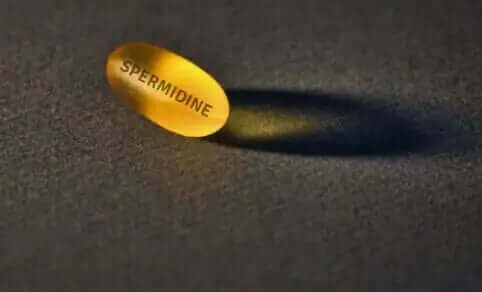Resveratrol Bioavailability Breakthrough: The Complete Guide to Maximum Absorption and Health Benefits
Resveratrol has captured the attention of scientists and health enthusiasts alike since researchers discovered its remarkable ability to activate longevity genes and support healthy aging. This comprehensive guide explores how to maximize Resveratrol absorption in your body, comparing traditional supplements with revolutionary new formulations that promise up to 98.4% better bioavailability.

The Revolutionary Discovery of Resveratrol and Longevity
The journey of Resveratrol from laboratory curiosity to wellness powerhouse began with a groundbreaking discovery. Scientists initially observed that this natural compound significantly reduced the aging rate in yeast cells. The real breakthrough came in 2003 when Harvard Medical School researchers revealed that Resveratrol activated a crucial longevity gene called SIRT1, triggering the production of protective sirtuin proteins.
This discovery sparked a wave of research that transformed our understanding of healthy aging. Scientists confirmed these anti-aging mechanisms in mice, then rapidly expanded their investigations to explore how Resveratrol could benefit human health. The results have been nothing short of extraordinary.
Why Resveratrol Benefits Matter More Than Ever
Research has revealed that Resveratrol supports multiple aspects of wellness that become increasingly important as we age. This powerful compound helps maintain cardiovascular health by supporting healthy blood flow and protecting blood vessels from oxidative stress. Additionally, Resveratrol plays a vital role in glucose metabolism, helping cells utilize energy more efficiently while maintaining healthy blood sugar levels.
Perhaps most exciting is how Resveratrol addresses inflammaging, the chronic low-grade inflammation associated with aging. By modulating inflammatory pathways, this compound helps maintain the delicate balance needed for optimal health throughout life. These discoveries explain why people worldwide have embraced red wine and Resveratrol supplements as part of their wellness routines.
The Bioavailability Challenge: Why Standard Resveratrol Falls Short
Despite its impressive benefits, traditional Resveratrol faces a significant challenge that limits its effectiveness in the human body. The compound's molecular structure, while perfect for its biological activities, makes it difficult for our bodies to absorb and utilize efficiently. This low bioavailability means that much of the Resveratrol you consume never reaches the cells where it can work its magic.
The problem lies in Resveratrol's three hydroxyl groups, which accelerate its elimination from the bloodstream. Your body metabolizes and removes standard Resveratrol so quickly that maintaining therapeutic levels becomes nearly impossible, even with high doses. This rapid clearance has frustrated researchers and consumers alike, spurring the search for more bioavailable alternatives.

Understanding Resveratrol vs. Pterostilbene: A Molecular Comparison
About a decade after the initial Resveratrol discoveries, scientists turned their attention to a closely related compound called Pterostilbene. Found naturally in blueberries, Pterostilbene shares a nearly identical structure with Resveratrol but with one crucial difference: it has only one hydroxyl group instead of three.
This structural variation makes Pterostilbene more lipophilic, allowing it to pass through cell membranes more easily. The compound stays in the bloodstream longer than standard Resveratrol, theoretically offering better bioavailability. Initial human safety studies published in 2013 generated considerable excitement about Pterostilbene as a superior alternative to Resveratrol.
The Hidden Drawback of Pterostilbene
However, recent research revealed an unexpected concern with Pterostilbene supplementation. A 2018 clinical study discovered that Pterostilbene could increase LDL cholesterol levels in some individuals, potentially offsetting its health benefits. This finding highlights the importance of thoroughly evaluating alternatives to Resveratrol before embracing them as superior options.
The M98 Resveratrol Complete Solution: A Game-Changing Innovation
Recognizing the limitations of both standard Resveratrol and Pterostilbene, researchers developed an innovative solution that combines the best of both worlds while avoiding their drawbacks. M98 Resveratrol Complete represents a breakthrough in Resveratrol supplementation, utilizing a modified molecule that dramatically improves absorption and retention.
This advanced formulation uses trans-resveratrol-3-O-glucoside, also known as piceid or polydatin, which offers remarkable advantages over traditional supplements. The glucoside modification makes the Resveratrol molecule 25 times more soluble than standard trans-resveratrol, ensuring better dissolution and absorption in your digestive system.
Dual Absorption Pathways for Maximum Effectiveness
What makes M98 Resveratrol Complete truly revolutionary is its ability to utilize both passive and active cellular transport systems. While standard Resveratrol relies solely on passive diffusion, the glucoside form can also enter cells through glucose transporters. This dual pathway approach ensures that more Resveratrol reaches your cells where it can activate sirtuins and provide its full spectrum of benefits.
The enhanced absorption translates to a significantly longer half-life in the bloodstream. While regular Resveratrol clears from your system rapidly, M98 Resveratrol Complete maintains therapeutic levels for approximately 240 minutes. This extended presence allows the compound to work continuously, supporting cellular health and longevity pathways throughout the day.

Scientific Evidence Supporting Enhanced Resveratrol Formulations
The superiority of glucoside-modified Resveratrol isn't just theoretical. Multiple peer-reviewed studies have validated its enhanced bioavailability and effectiveness. Research published in Pharmaceutical Biology demonstrated the improved absorption characteristics of trans-resveratrol-3-O-glucoside compared to standard formulations.
Additional studies in the Journal of Agricultural and Food Chemistry confirmed that the glucoside form maintains the beneficial activities of Resveratrol while offering superior pharmacokinetics. These findings have been replicated across multiple research institutions, building a robust body of evidence supporting this innovative approach to Resveratrol supplementation.
How to Choose the Right Resveratrol Supplement
Selecting an effective Resveratrol supplement requires understanding the key factors that influence bioavailability and effectiveness. Look for products that specify the form of Resveratrol they contain, as trans-resveratrol is significantly more beneficial than the cis form. The trans configuration matches what your body can utilize most effectively.
Consider formulations that address the bioavailability challenge through innovative delivery systems. While micronized Resveratrol offers some improvement over standard powders, the most significant advances come from molecular modifications like those found in M98 Resveratrol Complete. These enhanced forms ensure that you actually absorb and utilize the Resveratrol you're taking.
Dosage Considerations for Optimal Results
The improved bioavailability of advanced Resveratrol formulations means you may need less product to achieve the same or better results compared to standard supplements. This efficiency not only makes supplementation more convenient but also more economical in the long run. Always follow the manufacturer's recommendations and consult with healthcare providers when starting any new supplement regimen.
Maximizing Your Resveratrol Benefits Through Lifestyle Synergy
While choosing the right Resveratrol supplement is crucial, you can amplify its benefits through complementary lifestyle choices. Regular exercise enhances the activation of sirtuins, working synergistically with Resveratrol to support healthy aging. Similarly, maintaining a balanced diet rich in colorful fruits and vegetables provides additional polyphenols that work alongside Resveratrol.
Stress management also plays a vital role in maximizing Resveratrol's effectiveness. Chronic stress can interfere with cellular pathways that Resveratrol supports, so incorporating relaxation techniques like meditation or yoga can help ensure optimal results from your supplementation.
The Future of Resveratrol Research and Applications
The field of Resveratrol research continues to evolve rapidly, with new discoveries expanding our understanding of this remarkable compound. Scientists are exploring how Resveratrol interacts with other longevity pathways beyond SIRT1, potentially uncovering additional mechanisms that support healthy aging.
Emerging research also investigates how personalized approaches to Resveratrol supplementation might optimize results based on individual genetics and health status. As our understanding deepens, we can expect even more targeted and effective ways to harness the power of Resveratrol for human health and longevity.
Real Success Stories: How Enhanced Resveratrol Changes Lives
People worldwide are experiencing the transformative effects of properly absorbed Resveratrol. Many report increased energy levels, improved mental clarity, and a general sense of vitality that had been missing from their lives. These personal testimonies, combined with scientific research, paint a compelling picture of Resveratrol's potential when bioavailability barriers are overcome.
Athletes have found that Resveratrol supports their recovery and performance, while professionals appreciate the cognitive support during demanding workdays. Older adults particularly value how Resveratrol helps them maintain their active lifestyles and independence. These diverse benefits highlight the broad applicability of optimized Resveratrol supplementation.
Making Resveratrol Work for You: Practical Implementation
Starting your journey with enhanced Resveratrol supplementation doesn't have to be complicated. Begin by assessing your current health goals and how Resveratrol might support them. Whether you're focused on cardiovascular health, cognitive function, or general longevity support, understanding your objectives helps you track progress and stay motivated.
Consistency is key when supplementing with Resveratrol. The compound works best when maintained at steady levels in your system, so establish a routine that fits your lifestyle. Many people find that taking their Resveratrol supplement with breakfast helps them remember and starts their day with cellular support.
Frequently Asked Questions About Resveratrol
What makes Resveratrol different from other antioxidants?
Resveratrol stands apart from typical antioxidants because it directly activates longevity genes like SIRT1. While most antioxidants simply neutralize free radicals, Resveratrol triggers cellular pathways that enhance your body's own protective mechanisms. This unique action supports healthy aging at the genetic level, offering benefits that extend far beyond basic antioxidant protection.
How long does it take to see results from Resveratrol supplementation?
Most people begin noticing subtle improvements in energy and well-being within 2-4 weeks of consistent Resveratrol supplementation. However, the most significant benefits, particularly those related to cardiovascular health and cellular aging, develop over months of regular use. Enhanced formulations like M98 Resveratrol Complete may produce noticeable results more quickly due to their superior absorption.
Can I get enough Resveratrol from food sources alone?
While foods like red grapes, blueberries, and peanuts contain Resveratrol, the amounts are typically too low to achieve therapeutic benefits. You would need to consume impractical quantities of these foods daily to match the Resveratrol levels used in research studies. This is why concentrated supplements, especially those with enhanced bioavailability, offer a more practical approach to obtaining beneficial amounts of Resveratrol.
Is Resveratrol safe for long-term use?
Resveratrol has an excellent safety profile, with numerous studies confirming its safety for long-term supplementation. The compound has been used safely in research studies lasting several years without significant adverse effects. However, as with any supplement, it's wise to consult with healthcare providers, especially if you have existing health conditions or take medications.
What's the difference between trans-resveratrol and regular Resveratrol?
Trans-resveratrol is the biologically active form of Resveratrol that your body can utilize effectively. Regular Resveratrol may contain a mixture of trans and cis forms, with the cis form being less stable and less beneficial. Quality supplements specify trans-resveratrol content to ensure you're getting the most effective form of this powerful compound.
How does M98 Resveratrol Complete compare to micronized Resveratrol?
While micronized Resveratrol improves absorption through particle size reduction, M98 Resveratrol Complete takes a fundamentally different approach. By modifying the molecular structure with a glucoside group, M98 achieves 25 times better solubility and utilizes both passive and active cellular transport. This dual absorption pathway, combined with a four-hour longer half-life, makes M98 significantly more effective than even the best micronized formulations.
Can Resveratrol help with weight management?
Resveratrol supports healthy metabolism through multiple mechanisms, including improved insulin sensitivity and enhanced mitochondrial function. While not a weight loss supplement per se, Resveratrol helps optimize metabolic processes that can support healthy weight management when combined with proper diet and exercise. The improved energy metabolism many people experience can also make it easier to maintain an active lifestyle.
What time of day is best for taking Resveratrol?
Most people find morning supplementation with Resveratrol works best, as it can provide energy support throughout the day. Taking it with breakfast may also enhance absorption, especially for fat-soluble formulations. However, the most important factor is consistency, so choose a time that fits your routine and stick with it for optimal results.
Are there any medications that interact with Resveratrol?
Resveratrol may interact with blood-thinning medications due to its mild antiplatelet effects. It may also influence how your body processes certain medications metabolized by specific liver enzymes. Always inform your healthcare provider about Resveratrol supplementation, especially if you take prescription medications, to ensure safe and effective use.
How does Resveratrol support brain health?
Resveratrol crosses the blood-brain barrier and provides neuroprotective benefits through multiple pathways. It helps reduce oxidative stress in brain cells, supports healthy blood flow to the brain, and may help maintain cognitive function as we age. Research suggests that Resveratrol activates protective pathways that help neurons resist age-related decline, making it a valuable tool for long-term brain health.
Conclusion: Embracing the Full Potential of Resveratrol
The evolution from basic Resveratrol supplements to advanced formulations like M98 Resveratrol Complete represents a quantum leap in our ability to harness this compound's remarkable benefits. By overcoming the bioavailability challenges that have limited Resveratrol's effectiveness, these innovations open new possibilities for supporting healthy aging and optimal wellness.
As you consider adding Resveratrol to your health regimen, remember that not all supplements are created equal. The science clearly shows that enhanced absorption formulations deliver superior results, making them the smart choice for anyone serious about maximizing their health potential. With proper supplementation and a supportive lifestyle, Resveratrol can be a powerful ally in your journey toward vibrant, lasting wellness.
The future of healthy aging looks brighter than ever, thanks to our growing understanding of compounds like Resveratrol and innovations that make them more accessible to our bodies. By choosing scientifically advanced formulations and committing to consistent use, you can tap into the cellular support systems that nature designed to keep us thriving throughout our lives.







